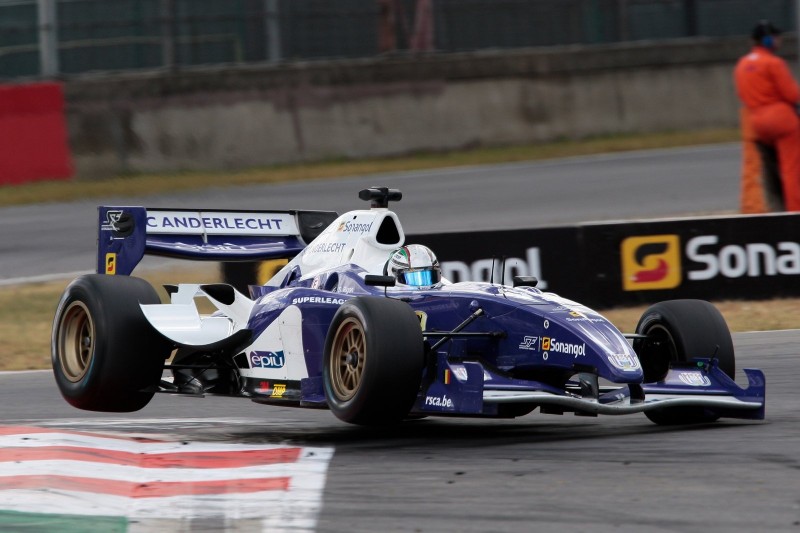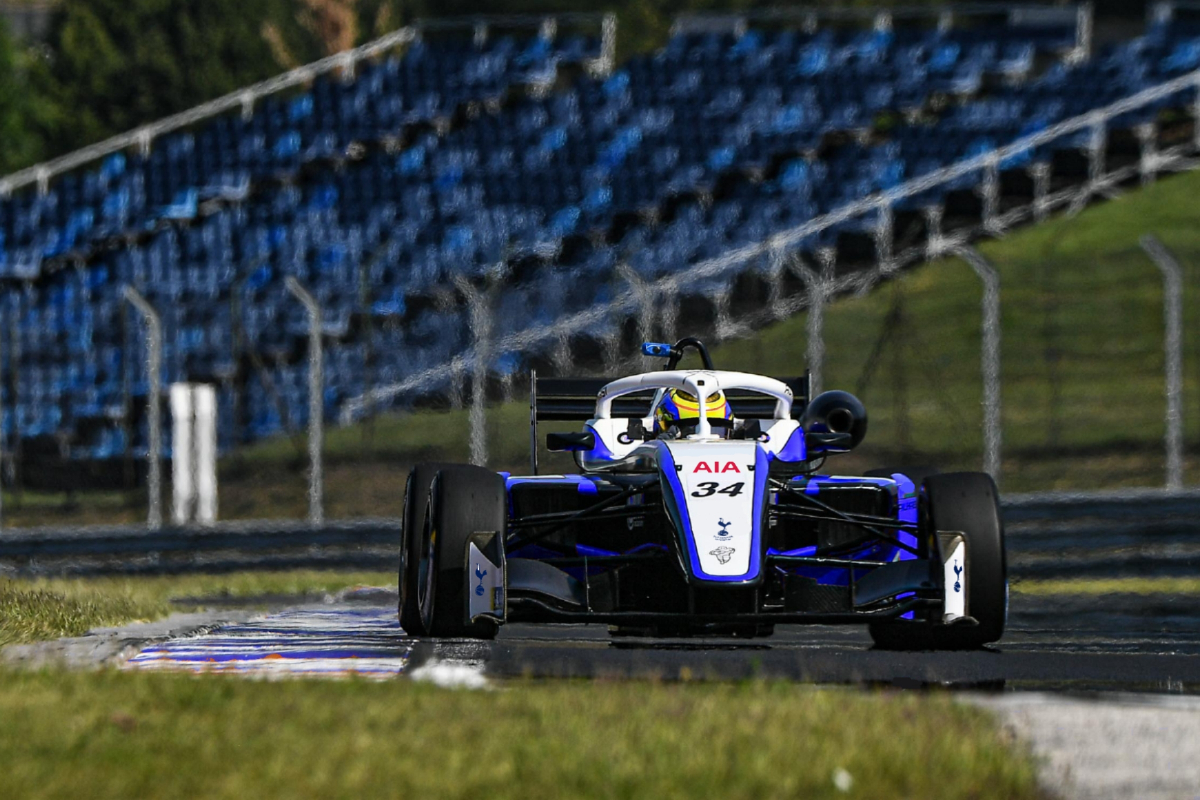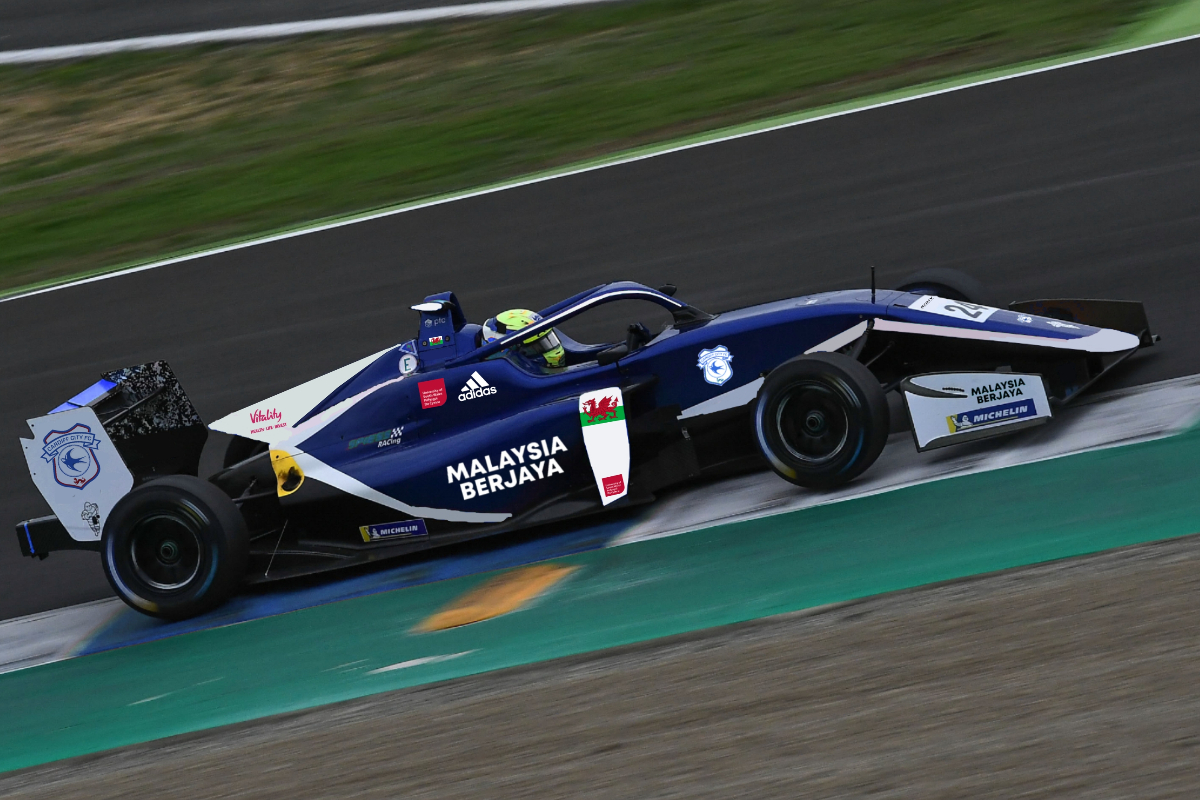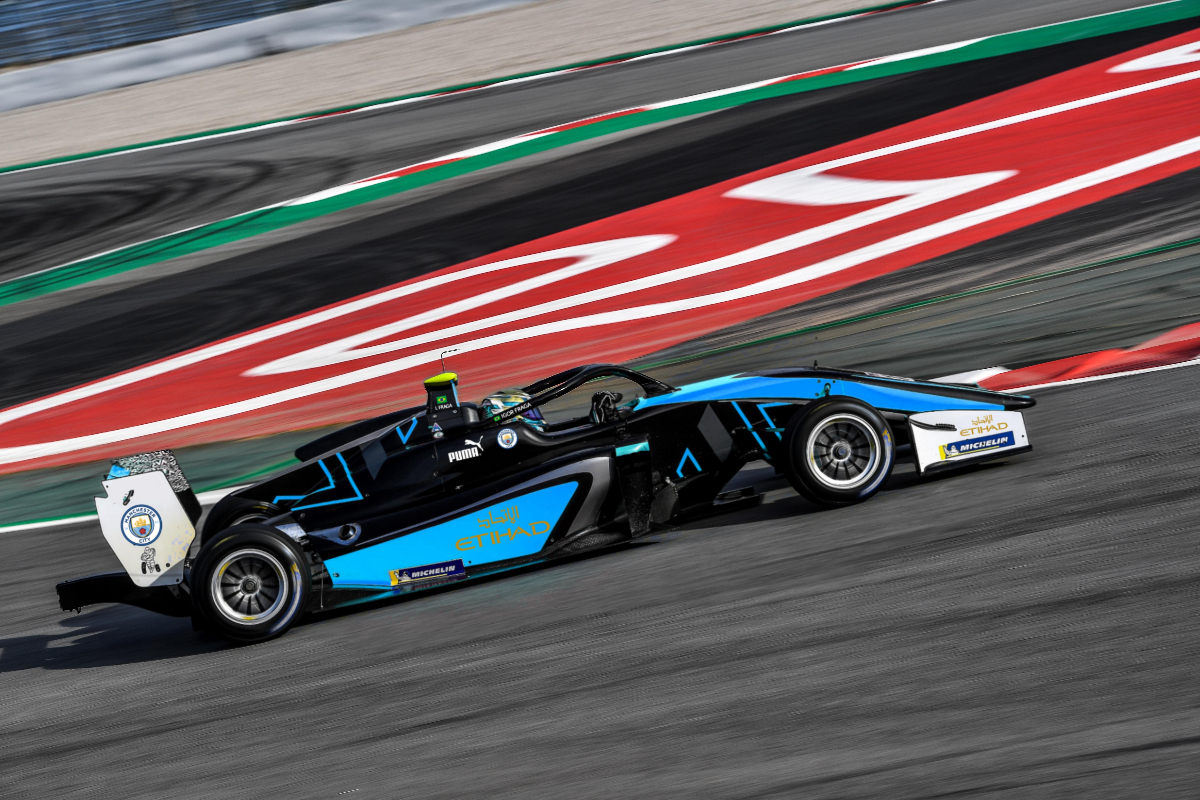
Photos: Fotospeedy, Edits: Formula Scout
The announcement of a European Super League by 12 of football’s biggest clubs sparked outrage, and reminded racing fans of an old series. Should the world’s biggest sport work with the world’s fastest again?
Sport is driven by money, and nowhere is this more obvious than at the top of football and single-seater racing. A failure to properly regulate spending has spiralled into ever-increasing player wages in one and a massive performance gulf in the other, and put teams on the brink of collapse in both.
Budget caps exist, but the damage has already been done and it’s tricky to get massive businesses to operate on a smaller budget without exposing the total unsustainability of their current models and putting them as much at risk of collapse as far smaller operations. Combine this with the increasing difficulty to get sponsorship, and now many big teams are built on weak foundations without a truly diverse revenue stream. Once one investment line is gone, it can be game over for the unprepared.
And nobody was prepared for the COVID-19 pandemic. The lack of spectators not only hit sport financially, but also changed where power lies as television broadcasters increased their lobbying abilities and online media finally established itself as a fellow gatekeeper in the way TV had been doing for decades. This actually turned out for the good at first, with F1 teams gaining new sponsors off the back of Netflix’s Drive to Survive series that followed the previous season’s action, and the Premier League returning to free-to-air domestic TV for the first time in a generation.
But the rescheduling of qualifying for last weekend’s Emilia-Romagna Grand Prix to avoid clashing with broadcasts of Prince Philip’s funeral was understood to be a move pushed for by F1’s biggest broadcaster Sky Group, and the biggest owners in world football have now made use of fans’ reduced power (no ticket sales means spectators are not investing in the ‘product’ and therefore lose an effective stakeholder position) to launch their own breakaway ‘Super League’.
Thankfully for fans, those plans are folding as quickly as they were announced, but it immediately put motorsport at risk.
 Had this new league gone ahead, and if it still does, then broadcasters would rush to get the rights to cover it and with their wallets wide open in a bidding war. The kind of companies that would do so would be the huge corporations that cover F1 and other major motorsport series at present, and it would have come at the expense of ‘smaller’ sports such as racing.
Had this new league gone ahead, and if it still does, then broadcasters would rush to get the rights to cover it and with their wallets wide open in a bidding war. The kind of companies that would do so would be the huge corporations that cover F1 and other major motorsport series at present, and it would have come at the expense of ‘smaller’ sports such as racing.
While the proposed mid-week format for the league wouldn’t clash with motorsport, meaning it wouldn’t be forced from TV schedules, funds would be rellocated to producing original programming or obtaining secondary rights to cover this new competition, and meaning less coverage of a sport already suffering in value of exposure stakes against football for sponsors.
And you can trace this back pretty much exactly 20 years ago when the first ever billion-pound broadcasting deal was signed for the Premier League with Sky, following a short-lived highlights package deal with ITV that also broadcast F1 in the UK.
F1 was being branded as ‘boring’ and a ‘procession’ at the time as the high-spending Ferrari dominated and backmarker team Minardi’s screen presence was limited to mostly being lapped despite having exciting teenaged driver Fernando Alonso in one of its cars. Over the summer, plans emerged of a rival series with spec cars and to be contended by football clubs.
The proposed Premier1 series was going to use a Judd V8 engine, a six-speed sequential gearbox and carbon brakes on cars that wouldn’t quite be F1-rivalling in pace (after an agreement was made with the FIA) and it attracted English team Leeds United and Portugal’s Benefica early on.
The Leeds chairman Peter Ridsdale said joining the series would be “an important step in the development of our club brand” when he signed up, which essentially meant it guaranteed his club’s presence in Europe even if it wasn’t strong enough to remain in continental football. The same motives are behind today’s Super League.
 The reality of a project like Premier1 was it was going to need F1 levels of money to get off the ground, without the might of automotive manufacturers behind it, and the multi-millionaire Colin Sullivan who was the mastermind of the series said he would be willing to underwrite the £125 million cost of holding the first season in 2002 with races in Europe and South America where the competing clubs (who didn’t have to pay into the series) would come from.
The reality of a project like Premier1 was it was going to need F1 levels of money to get off the ground, without the might of automotive manufacturers behind it, and the multi-millionaire Colin Sullivan who was the mastermind of the series said he would be willing to underwrite the £125 million cost of holding the first season in 2002 with races in Europe and South America where the competing clubs (who didn’t have to pay into the series) would come from.
The calendar was going to avoid F1 weekends and venues, and included Buenos Aires, Estoril, Lausitzring and Zandvoort.
Sullivan expected the series to break even in its second season and then be a profit-maker for investors by the end of the third season, when it would also be publicly floated on a stock exchange. The series’ operational director Robin Webb summed it up best when describing why people would back such a series: “They stand to make an awful lot of money.”
And that’s what the proposed Super League of today is about too. Even when spectators return, their contribution to revenue in football is now dwarfed by the size of overseas broadcast rights. “Football is nothing without a streaming platform in China” is how one pundit described it, and it was the same 20 years ago as Premier1’s marketing director Christian Scholbrock admitted at the time.
Back in 2001 he said: “The aim for the first 10 races next year is one billion viewers. If we don’t get it we’ll be pretty disappointed.”
The greed of football spilled over into wages too, with plans for drivers to earn up to £180,000 for each two-race round. That was a figure that few F1 drivers were earning at the time.
“If you do half a lap in each eace, you will get £7000 per event. The worst case scenario for drivers is £70k per season,” Webb added.
 More big clubs signed up, and were given 50% sponsorship rights on their cars, with the series taking all of the income from sponsors on wings. There would also be a budget cap and random scrutineering checks of the kind F1 has only introduced in 2021, and several top touring car teams were linked to running the cars.
More big clubs signed up, and were given 50% sponsorship rights on their cars, with the series taking all of the income from sponsors on wings. There would also be a budget cap and random scrutineering checks of the kind F1 has only introduced in 2021, and several top touring car teams were linked to running the cars.
Ultimately none of this came into existence, despite some real-world appearances by a car in Leeds colours, but the idea was revived by Webb in 2005 and after getting approval from the FIA he got the series actually racing in 2008 as Superleague Formula. Had it not been for Angolan state support for two of its seasons, it probably would have folded earlier than 2011.
By that final season there weren’t many clubs involved, having started off with the likes of A.C. Milan, Atletico Madrid and Liverpool among the 18 competing clubs in 2008. That came down to brand association, with the clubs already better known internationally than Ferrari but with limited actual marketing potential in racing accomplishments when they were only beating fellow football clubs. They needed to beat a team like Ferrari on the racetrack to continue beating it off it.
So if you really want to bring football and racing together, and guarantee your club will always be competing internationally regardless of performance, then you need to flip these previous ideas on their head.
Chelsea tried it first, sponsoring Sauber during the 2012 F1 season when it claimed four podiums, nearly won the Malaysian Grand Prix and came just 16 points short of Mercedes in the constructors’ standings.
European football had yet to build the broadcasting presence in Asia it has now, and F1 boss Bernie Ecclestone had really been a trailblazer is entering new markets in the east and maintaining a presence there. Chelsea wanted its name in places football had yet to reach, and the Sauber deal did just that.
While China now very firmly has its hand in European football, motorsport is still growing its audience there massively with F1’s online media reach in the country last year increasing by an incredible 133%. The trend was the opposite for most major sport franchises through the lockdown period, but that’s mainly because F1 is still playing catch-up on using digital media.
 Take any foreign market for football and the reality for most international fans is that they cannot see the club they support play in their own country. A national league cannot be relocated to where the money lies, which is what the Super League was in effect trying to do, with matches outside of Europe certainly on the agenda as well.
Take any foreign market for football and the reality for most international fans is that they cannot see the club they support play in their own country. A national league cannot be relocated to where the money lies, which is what the Super League was in effect trying to do, with matches outside of Europe certainly on the agenda as well.
But for a club to enter its own racing teams is not limited to any one competition or location and means you can take the brand to two different ends of the globe at once. Many continental clubs already have this to some effect, with the City Football Group consisting of clubs in different continents linked by name and branding, while Red Bull owns clubs in not only several countries but several sports too, and the Spanish football giants are actually titans of the basketball world as well under the same name.
So Formula Scout proposes a solution, which meets the money-making desires of both of the owners of the biggest football brands and the broadcasting companies as well as, most importantly for us, supporting young athletic talent.
Now more than ever following the Super League proposal, football club owners are some of the most unpopular individuals in sport and are constantly criticised for their lack of, or superfluous, investment decisions and putting money in front of both the competitive element and club element of the brands they preside over.
Scan the column inches and where you do find positive reporting on these multi-billionaires is when they invest in academy facilities or push their managerial staff to promote young talent, or join community and education schemes in local areas.
These are the kind of schemes that beyond generally improving life prospects also often focus in industry-relevant skills that result in the next generation of nutritionists, sport doctors, press officers, social media account admins and treasurers. Barcelona’s famous academy is a great example of this, and certainly has a career pipeline, but the UK does the same and many of those names are ending up working in motorsport anyway.
 Cardiff City is partnered with University of South Wales, which offers degrees in Automotive Engineering up to a Masters level, while a few miles away is Cardiff Metropolitan University that has its own football team competing in the Welsh premier league and does an MSc in International Sport Management. For either Cardiff club, an involvement in international motorsport would only make the universities all the more attractive for prospective students and formalise a pipeline that takes many graduates into paddocks today. The Malaysian owner of Cardiff City certainly has the budget to spare there.
Cardiff City is partnered with University of South Wales, which offers degrees in Automotive Engineering up to a Masters level, while a few miles away is Cardiff Metropolitan University that has its own football team competing in the Welsh premier league and does an MSc in International Sport Management. For either Cardiff club, an involvement in international motorsport would only make the universities all the more attractive for prospective students and formalise a pipeline that takes many graduates into paddocks today. The Malaysian owner of Cardiff City certainly has the budget to spare there.
Then there are clubs that hold European competition ambitions but can’t quite reach them, and rather than spend in advance of £50 million to bring in new players, the owners could reach that goal at a far lower cost with a guaranteed continental presence by joining a racing series abroad with a young driver and taking them to success (with the help of an existing team).
Alpine and Aston Martin have the ‘naming rights’ in 2021 for what were the Renault and Racing Point F1 teams, so why not do the same to teams lower down the single-seater ladder?
In Euroformula, Motopark has resorted to having its own spin-off team for two seasons as a result of signing too many drivers. That runs under the name of sponsor CryptoTower, but why not align itself with a fellow sport team instead? In addition to bringing in that team’s fanbase, it would also just create wider interest if the potential champion of this year did so as say a Newcastle United or Southampton driver rather than representing a cryptocurrency trader. It might give those fans something to cheer about in 2021 too.
A similar strategy is at play in Formula Regional European Championship, where Alpine F1 driver Alonso’s multi-discipline team has its name on three cars but it’s MP Motorsport doing the business in the garages at the track.
Co-ownership is far more common in America, where the Steinbrenner family owns the New York Yankees baseball team and George Steinbrenner IV co-owns and runs IndyCar and Indy Lights entries. The City Group would do well to promote its New York City football team there while TV figures for the MLS stagnate at around one quarter of what IndyCar is attracting.
 Then there’s one more place where it would seem natural for football to weave its way back into international motorsport, which is centrally-run series. W Series and several Formula 4 championships have entire grids run by a single team, and so there would be no operational costs for clubs that either want to support individual drivers or partner with the series.
Then there’s one more place where it would seem natural for football to weave its way back into international motorsport, which is centrally-run series. W Series and several Formula 4 championships have entire grids run by a single team, and so there would be no operational costs for clubs that either want to support individual drivers or partner with the series.
It’s an idea that seems ready-made for W Series’ made-for-TV product, although the series probably wouldn’t want its own brand to be a secondary element in headlines, and a tie-up with brands from other sports for gender parity at the grassroots level would follow their mission aim.
There are already some motorsport links in football, as Italy’s Agnelli family is the majority owner of Juventus and a minority owner in Ferrari through a holding company, while the Hyundai board has to check up its World Rally Championship commitments against running its basketball, football and volleyball teams in South Korea.
And then finally, there’s Lewis Hamilton.
If you were asked to name a sportswear brand, many would say Nike or Adidas. And they are going to be the most common answers in a lot of countries.
Its rivals have realised that in recent years and changed their marketing strategies, realising that fighting the same old battles to sign the biggest football and basketball stars and develop the most advanced footwear and jerseys wasn’t actually giving them distinct images in the global market despite still taking up a sizeable market share.
In 2013, German sportswear brand Puma announced its new corporate mission would be “to be the fastest sports brand in the world” and its mantra would be “Forever Faster”.
 One of the first major athletes it signed that year was Hamilton, then only a one-time F1 world champion but widely regarded as the fastest racing driver on the planet on one-lap pace.
One of the first major athletes it signed that year was Hamilton, then only a one-time F1 world champion but widely regarded as the fastest racing driver on the planet on one-lap pace.
In 2017 he became a brand ambassador for performance, and by 2019 Hamilton was a six-time champion and Puma had become the fastest growing sportswear brand in the world and home to the fastest athletes. Alongside Hamilton in its ranks was sprinting legend Usain Bolt, record-breaking cricketer Virat Kohli and several F1 teams, and then footballer Neymar and teenaged basketball sensation LaMelo Ball joined in 2020. It saw the value in partnering with a racing star early enough to capitalise.
But the size of the sportswear and athleisure market has still gone untapped by motorsport, where caps are the most popular item of team merchandise (mainly as they are affordable), and it’s these brands that often have major sponsorship deals with football clubs. Hamilton has gone some way to make F1 more fashionable via his business interests, but if you’re the likes of Alpinestars or Puma kitting out the next hottest talent in racing, then you should probably shout about it a bit more.
Bringing football back to motorsport might be the kick needed to not only remind those on four wheels that you can have ambitious team kits, and therefore memorable ones, but to see the light on normalising a money-making opportunity that can trickle all the way down the ladder via a young but also committed fanbase. I mean, who didn’t spend 2014 wanting a Jagonya Ayam with Carlin shirt or has wondered about racing boots as a fashion item? Sadly marketing never gave us the answer.
Further reading
Davide Rigon: The story of Ferrari’s football-famous test driver
Why Europe needs a series to rival IndyCar and Super Formula
The man who turned down a football stadium for the return of street racing
Why Alpine’s new academy is more ‘restructure’ than ‘rebrand’